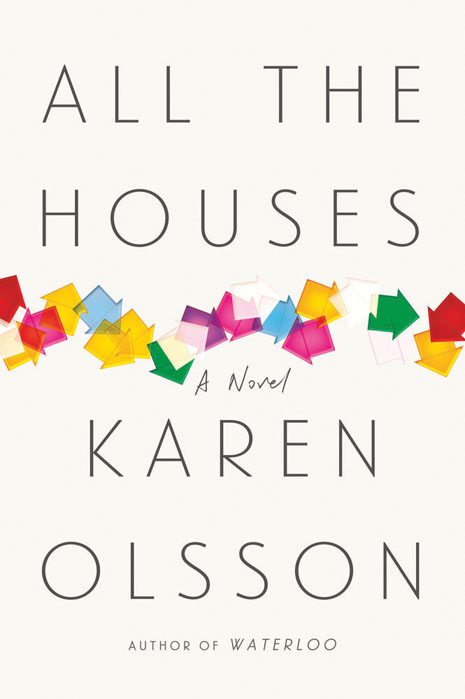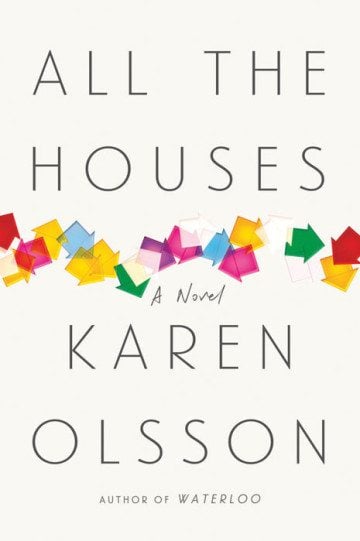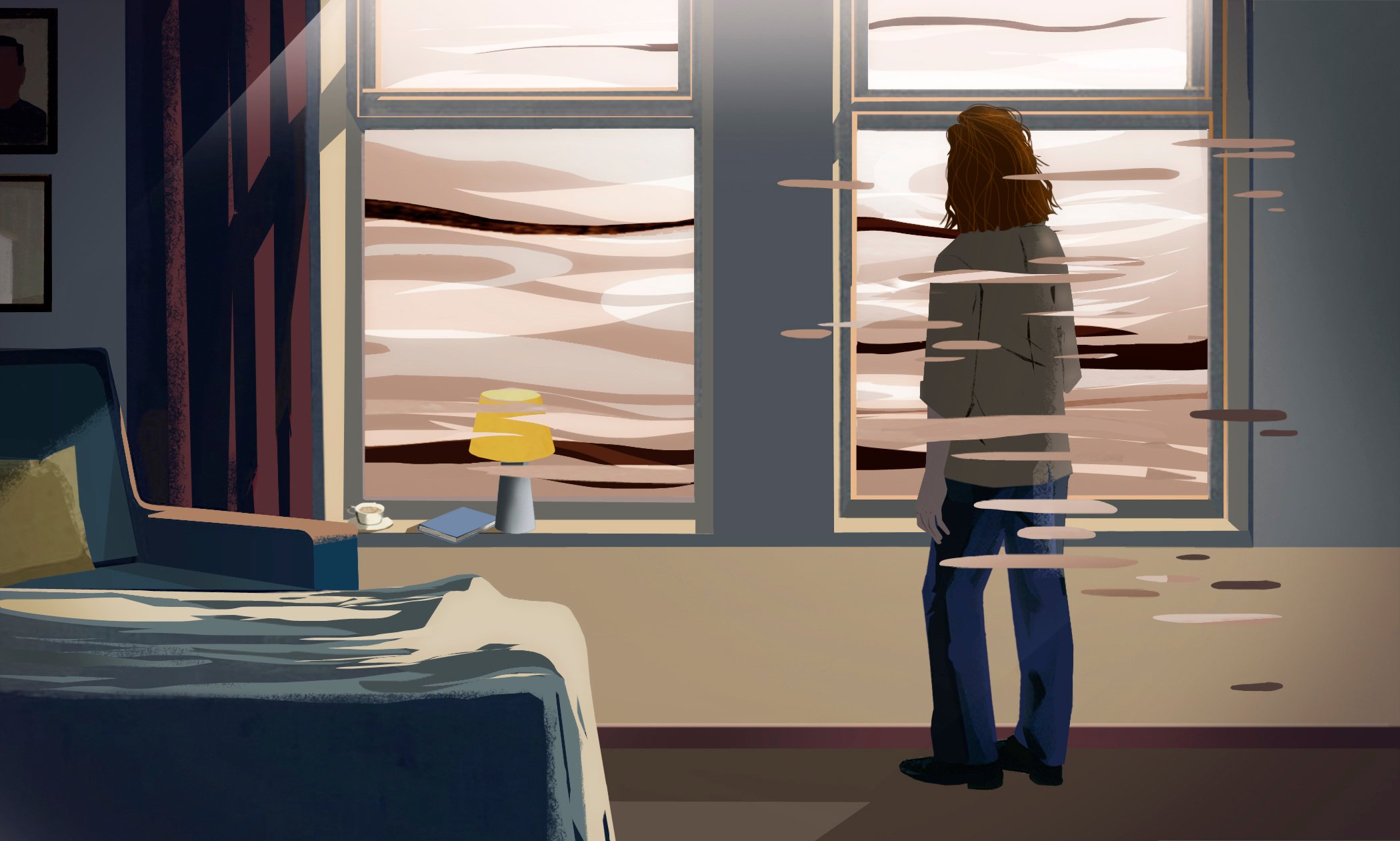
Dramas of Family and State Unfold in ‘All the Houses’
Karen Olsson's novel is about coming to terms with the past in a family — and maybe in a country — that too often refuses to acknowledge any tense but the unreflective present.

A version of this story ran in the December 2015 issue.

By Karen Olsson
FARRAR, STRAUS AND GIROUX
400 PAGES; $27 Farrar, Straus and Giroux
Every generation gets at least one signal political disillusionment, a Watergate or Abu Ghraib, a moment when the inchoate suspicion that all is not as you’ve been told, that authority might be a mask hiding subterfuge and lies, is dragged under the hot lights of the nightly news and proved beyond a shadow of a doubt.
For young Americans just dipping their toes in the dark water of adult awareness in 1986, the Iran-Contra affair marked just such an end of innocence. Those of us in our teens at the time may not have had the wherewithal to grasp every last detail of the convoluted deal by which a Marine named Oliver North managed to either hijack or enact illicit U.S. foreign policy, laundering arms sales to Iran in exchange for American hostages and funneling illegal support to Nicaragua’s rebel Contras over the prohibitions of Congress. But we knew, along with Fawn Hall, what shredders were for, and Ronald Reagan’s 88 under-oath protestations of “I don’t recall” would have rung false even in a child’s ears.
The unravelling of the Iran-Contra scandal — at least the Washington, D.C. end of it — is the milieu in which Karen Olsson’s All the Houses unfolds, and the end of familial innocence is the novel’s subject. Intuiting the threads that tether those two stories, the national and the personal, and unearthing the subtle, painful and sometimes damaging ways in which they inform each other, are at the core of the book’s significance.
“An Iran-Contra novel was worse than an Iran-Contra feature film, and only an Iran-Contra epic poem or maybe an Iran-Contra operetta would have been less promising.”
What Atherton did or did not know and do, whether he was an essentially passive bystander or a more active enabler of the scheme that divided his life — and the life of his family — into a sunny before and a clouded after, is the parallel investigation undertaken by Helen, Atherton’s middle daughter and the novel’s narrator.
Helen was 16 when the scandal began to break in 1986, and Olsson — who was born and raised in D.C., and would have been about 14 at the time — both trusts her with the novel’s voice and imbues her with its most compelling personality. Helen, now in her mid-30s, has been living in Los Angeles, single and financially insecure, writing come-to-nothing screenplays and regretting poor dating choices, when her dad suffers a minor heart attack back in D.C. He’s long since divorced, retired from his comfortable post-government job in the private sector, and recuperating alone. With Helen’s older sister, Courtney, immersed in her own fledgling family life, and younger sister, Maggie, teaching college in New York City, it falls to Helen to move back home and help care for him. The setup gives Helen the opportunity to go poking around in her dad’s past, and her own, which she does under the part-serious pretense of working on a book about the family’s brief and unsatisfying intersection with American history.
That the project goes nowhere is part and parcel of the semi-depressed half-starts that characterize almost everything about Helen’s life, but All the Houses is not a book about writing a book, though it does contain some comically meta musings about the prospect. For instance: “So far I hadn’t told anyone what I was up to, nor could I have told them exactly. I certainly didn’t want to call it a novel. An Iran-Contra novel was worse than an Iran-Contra feature film, and only an Iran-Contra epic poem or maybe an Iran-Contra operetta would have been less promising.”) All the Houses is instead a book about coming to terms with the past in a family — and maybe in a country — that too often refuses to acknowledge any tense but the unreflective present.
All the Houses makes a more legitimate claim than most as a genuinely great American novel.
“No one else could rile me the way Courtney could. It wasn’t anything she explicitly said or did, so much as the attitude, the superior stance. She was the older sister with her shit together and I was the incompetent, self-absorbed, lost one. She’d found this place for herself, a fancy pouf to park her butt on, and from it she watched me and criticized me and offered up stupid suggestions until I just wanted to kill her. I don’t mean that only figuratively. I can remember fights we had as girls, the kicking and the biting that would begin tentatively and then turn vicious. The urge to annihilate each other had always been there, tamed over the years but never uprooted.”
Olsson, a former Texas Observer editor and author of 2006’s well-regarded novel Waterloo (disclosure: I reviewed that book admiringly for the Houston Chronicle), brings the same verve to her descriptions of D.C.: “The segregation, the small-mindedness, the wonks. The ‘Where do you work?’ The acronyms in response. The weight of institutions and of so much self-inflation. The blazers, the pearl necklaces, the bow ties, the stuffed shirts, the eager-beaver bullshitters.” Her pitch-perfect evocations of youth, of pool parties and bus trips and sibling secrets, have the satisfyingly magical effect of erasing time in a story that spans decades. And she’s stocked the book liberally with the sort of bulb-lighting descriptions and pointed insights that tend to translate poorly in excerpt, removed from their carefully constructed contexts, but reward a reader’s investment not only in Olsson’s characters, but in her sentences.
As a family drama with ambitions of national resonance, All the Houses reminds me of nothing so much as the recent swing-for-the-fences novels of Jonathan Franzen. The difference is that Olsson’s book is more intimate, less portentous, better written and more resonant with its time and place. One wouldn’t want to be quite so grand (or absurd) as to say that it’s the only one, but All the Houses makes a more legitimate claim than most as a genuinely great American novel.


